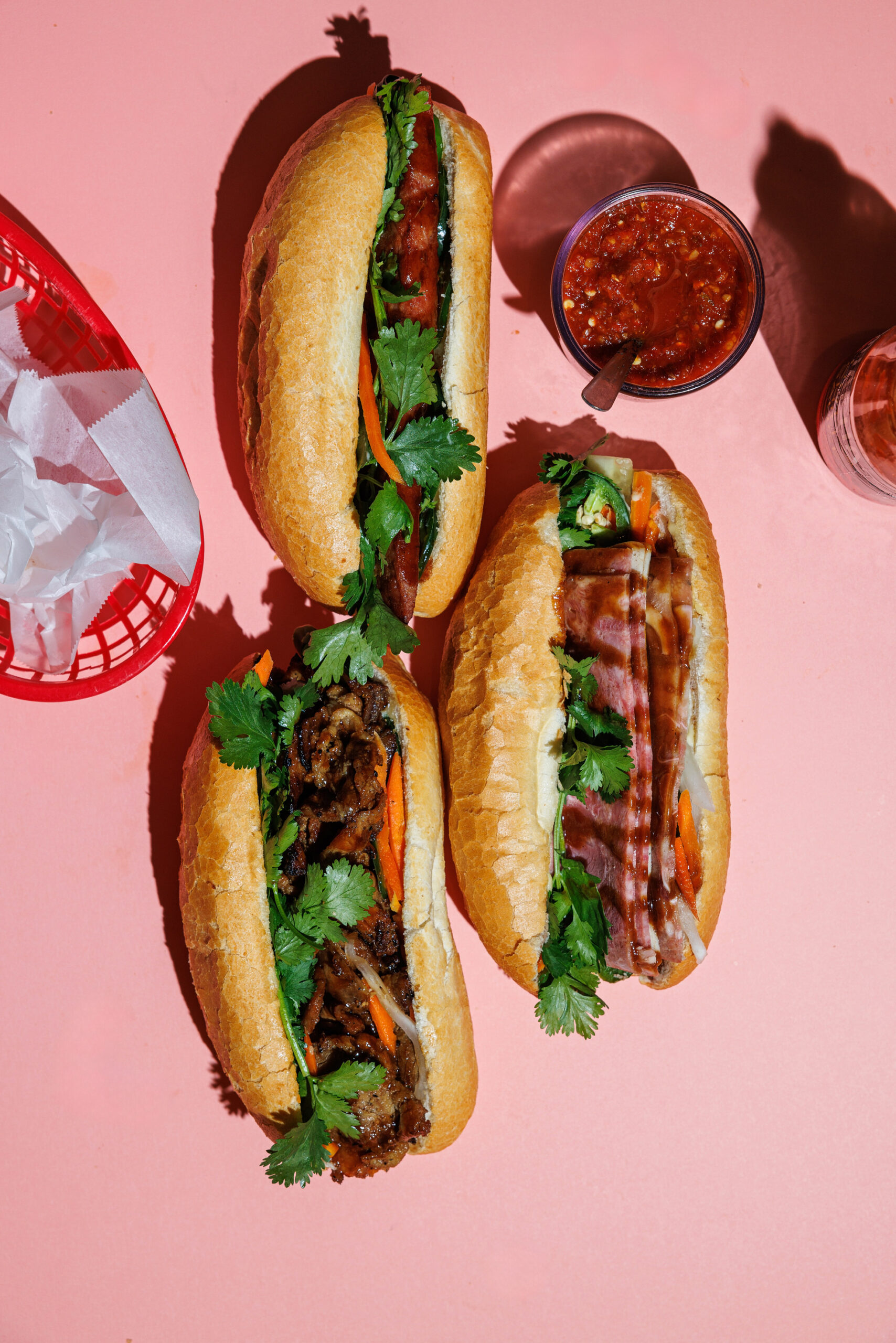
Dubbed ‘the Vietnamese po-boy,’ the banh mi has its own kinship with Louisiana sandwiches
Natives of south Louisiana who are intimately familiar with the po-boy sometimes assume the banh mi is a distinctly Louisiana thing—marrying the cuisine of Vietnamese immigrants with local French bread.
But that fusion of flavors got its start outside the U.S., and that’s where the French influence was first felt, too. When France invaded Vietnam in 1887, the military brought along the country’s favorite snack, the crunchy baguette, to keep French soldiers happy.
Once the occupation ended in the ’50s, the Vietnamese people made the baguette their own, stuffing it with their quintessential balance of flavors: salty, savory, sour, spicy, sweet. The banh mi we happily munch on today in the Capital Region fully originated an ocean away, though it still has its own unique connection with the hefty po-boy we know and love.
|
|
Nancy Huynh, manager of Bao Vietnamese Kitchen on Perkins Road, says the banh mi is the most popular item at the 7-year-old restaurant.
“I think it’s one of the things that makes us stand out,” she says. “We make everything here homemade. It will make you want to come back for more.”
Bao’s banh mi begins with soft French bread from New Orleans. Banh mi bread is traditionally a shorter loaf than a po-boy, similar to a pistolette. It’s toasted to order, with a golden crust so flaky it resembles a crackled mosaic pattern.
Where others might slather standard store-bought mayo on the interior, Bao makes its own decadent spread. With whisked egg whites and savory seasonings, the consistency is like butter.
Then come the proteins—and Bao has quite a few options: barbecue pork, lemongrass pork or chicken, cold cuts, Vietnamese ham, tofu, meatballs or nem nuong (a Vietnamese sausage). Next, crisp strips of cucumber, slices of potent jalapenos and herbaceous sprigs of cilantro.
The show-stopping finish is a medley of julienned pickled carrot and daikon that Huynh says is often sold in containers for patrons to take home.
It’s essential to get every ingredient in one big bite: the chewy and sweet bread, the vinegary crunch of pickled veggies, the luscious “butter” and the tender meat.
Bao’s most popular banh mi are the lemongrass chicken and pork, both marinated for days with the distinctive herbs, fish sauce, sugar and seasonings, then grilled to perfection. One of Huynh’s favorites, though, is the nem nuong: a Vietnamese pork sausage that’s sliced lengthwise into planks and grilled to a nice sweet-salty char.
Wash it down with a lychee iced tea for an experience that highlights all the robust flavors Vietnamese cuisine has to offer.
“Once you have it,” Huynh says, “you just want to try it again.”
 Banh mi blitz
Banh mi blitz
A few spots to try this Vietnamese sandwich
Ava Street Cafe
5207 Essen Lane
Bao Vietnamese Kitchen
8342 Perkins Road
Dang’s
12385 Florida Blvd
Pho 97
15540 George O’Neal Road
Pho Viet Noodle House
503 Louisiana 30 W., Suite F, Gonzales
Tiger Pho Vietnamese Kitchen
6413 Jones Creek Road
This article was originally published in the October 2024 issue of 225 Magazine.
|
|
|




